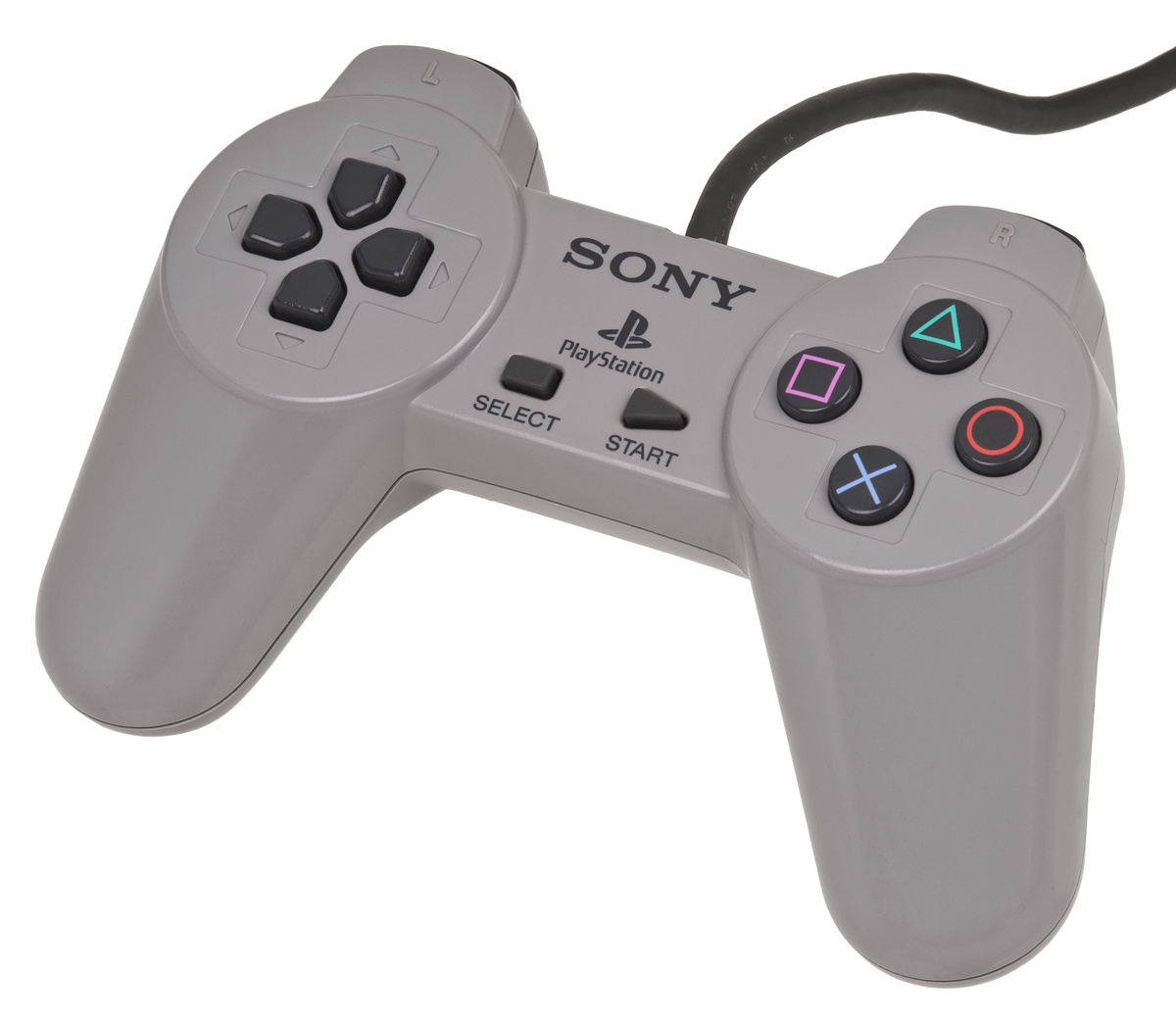The PlayStation Controller, an emblematic symbol in the gaming world, has become synonymous with the Sony PlayStation brand since its initial launch in the mid-90s. However, like all technology, it has undergone a significant transformation throughout the years. From the original PlayStation to the PS5, every new console generation has brought with it a new, improved iteration of the controller, each uniquely captivating in its own right.
The Genesis: PlayStation Controller (1994)
In 1994, Sony made its groundbreaking entrance into the gaming industry with the PlayStation console. Alongside the console, the first PlayStation Controller made its debut, introducing a design that would become iconic.
The original controller was simple, with its rhombus shape, two handles, a D-pad on the left, four iconic geometric buttons (Triangle, Circle, Cross, Square) on the right, Start and Select buttons in the middle, and shoulder buttons (L1, R1, L2, R2) on top.
Fun Fact: Each of the four shapes on the original PlayStation controller were designed with a specific purpose. The triangle symbolizes the viewpoint, the square is a symbol of a piece of paper representing menus or documents, and the circle and cross represent 'yes' and 'no' decision-making actions, respectively.
The Birth of DualShock: DualShock Controller (1997)
Just three years after the launch of the original PlayStation Controller, Sony released the first DualShock Controller. Named for its dual vibration motors, this iteration marked a significant turning point in the evolution of the PlayStation controller. It retained the original's signature design but introduced two key features – analog sticks and haptic feedback.
The dual analog sticks allowed for improved precision, offering gamers the ability to navigate 3D environments more intuitively. Haptic feedback, or the rumble feature, made games more immersive by providing physical feedback in sync with on-screen actions.
External Link: Discover more about the technology behind Haptic Feedback here.
The Wireless Revolution: Sixaxis and DualShock 3 (2006 - 2007)
With the launch of the PlayStation 3, Sony unveiled the Sixaxis Controller, its first wireless controller, named for its ability to detect motion in six axes. Although it retained the core design of the DualShock, the Sixaxis was lighter due to the absence of the rumble feature. This omission, however, was met with backlash from the gaming community.
Sony took this feedback into account and, less than a year later, released the DualShock 3, which re-introduced haptic feedback and maintained the Sixaxis' motion-sensing capabilities.
Touching the Future: DualShock 4 (2013)
As the PlayStation 4 hit the market, Sony revealed the DualShock 4, the most radically redesigned PlayStation controller up to that point. While it maintained the classic layout, the DualShock 4 introduced several new features.
The most noticeable change was the addition of a clickable two-point capacitive touchpad on the front of the controller, allowing a whole new range of input possibilities. The controller also included a built-in speaker, a headphone jack, a Share button for easy access to social media features, and a light bar that could interact with the PlayStation Camera for motion tracking.
Into a New Era: DualSense (2020)
With the launch of the PlayStation 5 in 2020, Sony introduced the DualSense, the latest evolution of the PlayStation controller. Its name reflects its focus on 'sensing' the virtual world of games in a more tactile way.
The DualSense controller sports a bold two-tone design and a more ergonomic form factor. But the most significant upgrades lie under the hood. The DualSense controller's haptic feedback and adaptive triggers provide more immersive physical feedback. For example, players can 'feel' different textures and resistance in their games, such as the grittiness of driving through dirt or the tension of drawing a bow. Dualsense's elite version will also have hall effect sticks soon.
The PlayStation controller's evolution mirrors the gaming industry's progress at large. Each iteration of the controller marks a significant milestone in gaming history, introducing new technologies that enhance the gaming experience's depth and immersion.
From the first PlayStation controller in 1994 to the cutting-edge DualSense in 2020, Sony's continuous innovation exemplifies the commitment to pushing the boundaries of gameplay. As we anticipate what the future holds for the next generation of PlayStation controllers, we can be sure that Sony will continue to reshape the way we interact with the digital world.


No comments yet